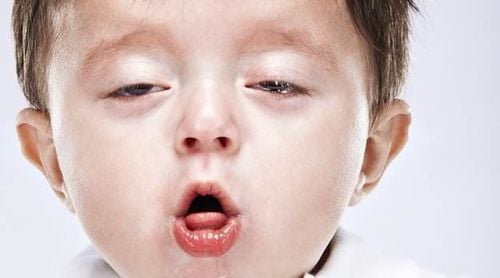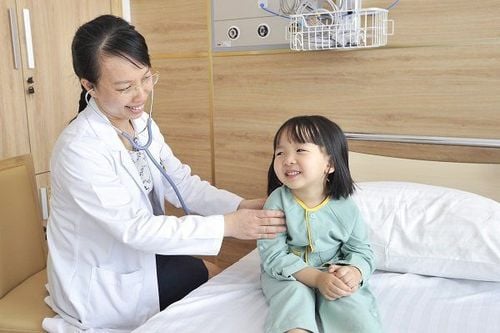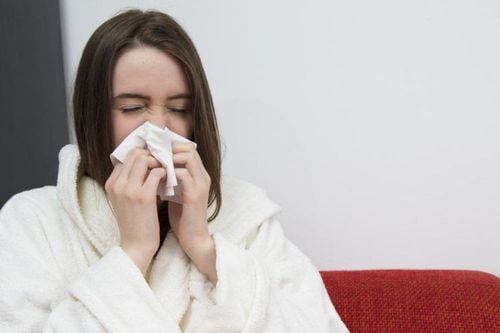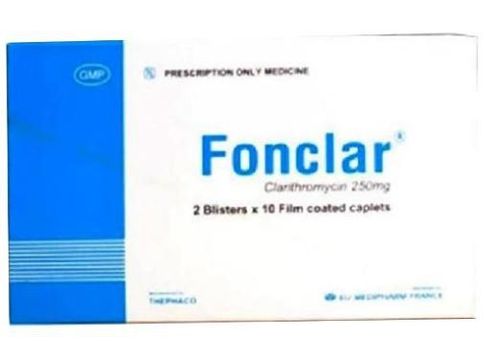This is an automatically translated article.
The article was professionally consulted by Specialist Doctor II Le Thanh Cam - Department of Pediatrics - Neonatology, Vinmec Da Nang International General Hospital.Whooping cough is an acute infectious disease capable of spreading quickly through the respiratory tract, the disease can occur at any age, but is common and most dangerous in infants. Learn to proactively detect and treat the disease early to avoid complications and how to prevent the disease effectively.
1. What is the cause of whooping cough?
Whooping cough is an infectious disease caused by the pertussis bacterium Bordetella pertussis.Path of disease transmission: Mainly through inhalation or direct contact through saliva when an infected person talks or comes into contact with objects contaminated with respiratory secretions of an infected person.
People at risk of pertussis: The disease occurs at all ages, however, more than 90% of cases are children under 1 year of age who have not been vaccinated or have not received 3 basic shots. The younger the child, the more severe the disease and the more complications.
2. Manifestations of pertussis in infants
Whooping cough in children progresses through stages:Incubation period lasts from 6-20 days (average is about 9-10 days): This period is asymptomatic. lasts about 1-2 weeks, symptoms appear similar to those of upper respiratory tract infections including low-grade fever, runny nose, cough, sore throat, and sneezing at the end of this stage, severe cough into a flare Stage of onset: Prolonged lasts from 1-6 weeks, in some special cases it can last for more than 10 weeks with typical symptoms of a cough such as: Cough: Cough: Coughing in children, in episodes, each cough lasts from 15-20 hours in a row, later, weaker and gradually decreased. In children, coughs appear many times, causing children to become weaker, such as apnea due to lack of oxygen, pale face, red face, swollen neck veins, watery eyes and nose.

Inhalation: Appears at the end of each cough or alternates after each cough, the hissing sounds like a cock. Babies under 6 months of age may not hear a hissing sound during a cough. End the cough with white, clear, sticky sputum. Sputum containing pertussis bacteria is also a source of infection. During the first 2 weeks of this phase, the frequency of coughs is about 15 attacks/day. Then tapering can last for more than 3 weeks if left untreated. After each cough, the child is tired, may vomit, and breathe quickly. May be accompanied by the following symptoms: Mild fever, severe face and eyelids. Recovery phase: The cough subsides, the patient's fever subsides. However, many months later, the cough can return to cause pneumonia. Manifestations in adults and adolescents are usually mild, with a typical cough, or no symptoms, usually resolved after 7 days.
Trắc nghiệm: các chỉ số cần chú ý về sự phát triển thể chất của trẻ
Chiều cao, cân nặng của bé ở từng giai đoạn nên là bao nhiêu là bình thường, bao nhiêu là bất thường? Cùng ThS.BS Ma Văn Thấm điểm lại xem bạn đã nắm được các chỉ số phát triển thể chất của bé chưa nhé!The following content is prepared under supervision of Thạc sĩ, Bác sĩ y khoa, Ma Văn Thấm , Nhi , Phòng khám Đa khoa Quốc tế Vinmec Dương Đông(Phú Quốc)
3. Complications of whooping cough
Complications of dangerous pertussis often occur in young children. Complications include:
Bronchitis, bronchopneumonia due to superinfection. Prolonged cough and respiratory arrest are the most common and potentially fatal complications, especially in children under 1 year of age. Cough in many patients can cause intussusception, intestinal hernia, and rectal prolapse. Severe cases can cause alveolar rupture, pneumomediastinum or pneumothorax. In addition, encephalitis complication (accounting for 0.1%) is a serious complication of pertussis, with a high rate of sequelae and mortality.
4. Treatment of whooping cough
Treat the cause: Use antibiotics before the cough appears. Especially for children under 6 months, early treatment as soon as the first signs are seen is very important.Symptomatic treatment: In some severe cases, children may have seizures. Anticonvulsants can be used such as phenobarbital, seduxen...
Combination of nutrition for children: due to coughing many children can vomiting, so after the child vomits, you can feed the child. Complete nutritional supplements for children.
5. Prevention of whooping cough
Patients should be detected and treated promptly to avoid spreading to the community, especially pertussis to infants and young children.Fully vaccinated according to the vaccination schedule is the most effective method of prevention.

Children are vaccinated against pertussis in the same 5-in-1 injection including: diphtheria. - whooping cough - tetanus - hepatitis B - Hib (DPT-VGB-Hib). Performed full injection 3 times. With a team of pediatricians and infectious disease specialists, patients with pertussis are examined, classified and treated according to the correct treatment regimen. Patients who come for examination and treatment are fully consulted about the disease and appropriate nutrition regimens. Pertussis is a dangerous infectious disease with many serious complications, especially pertussis in infants and young children. The disease needs to be detected early and treated early to avoid serious complications of the disease. Actively vaccinated against whooping cough fully to avoid disease affecting your health.
Please dial HOTLINE for more information or register for an appointment HERE. Download MyVinmec app to make appointments faster and to manage your bookings easily.
Reference source: Department of Preventive Medicine - Ministry of Health














